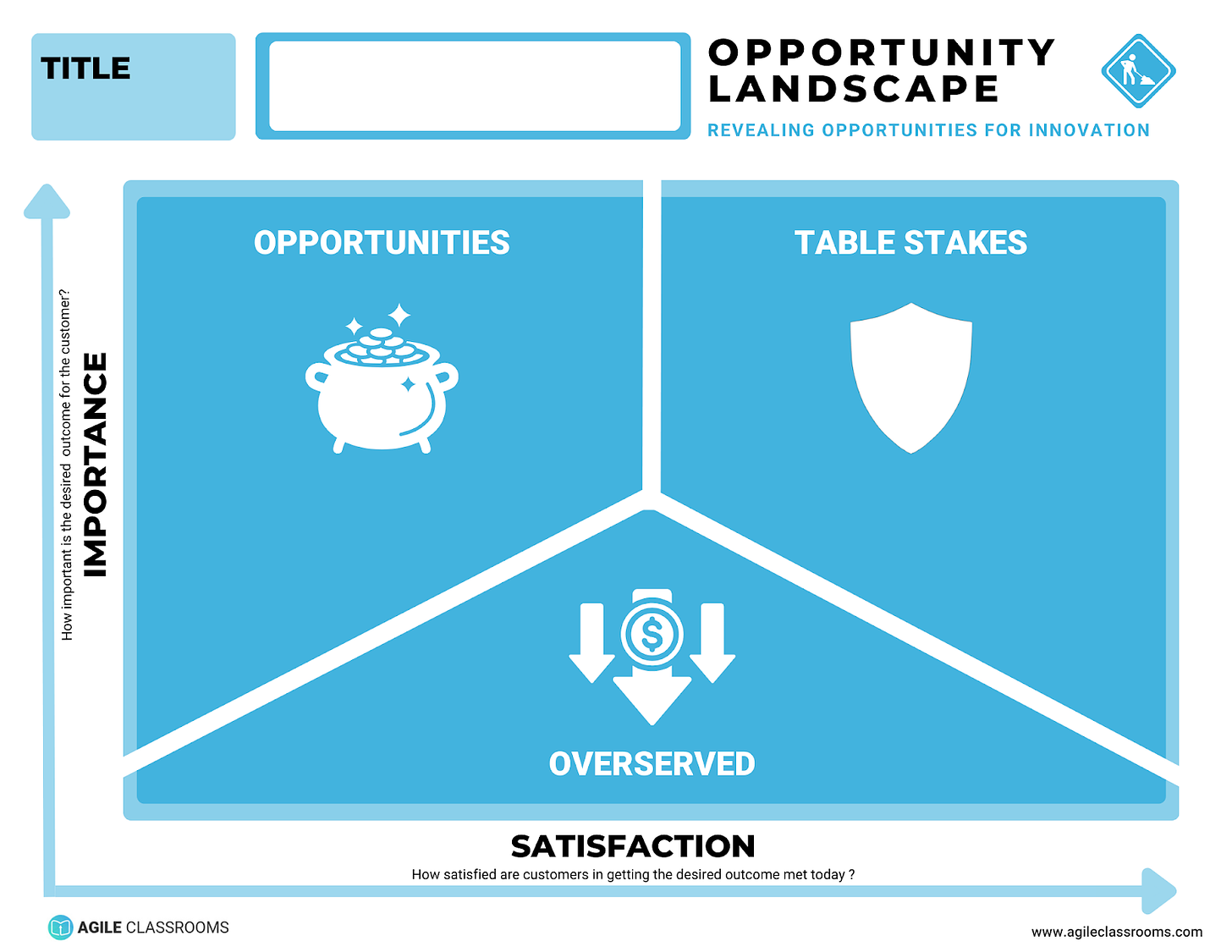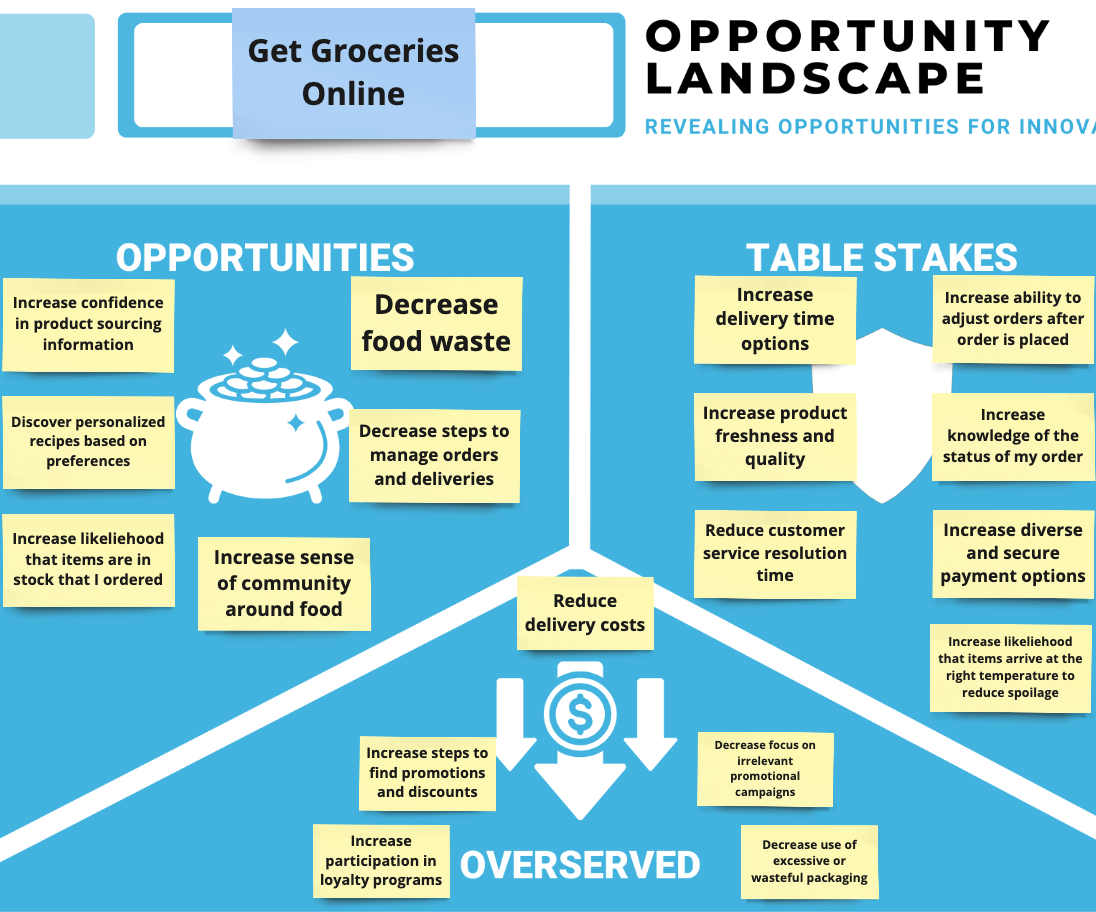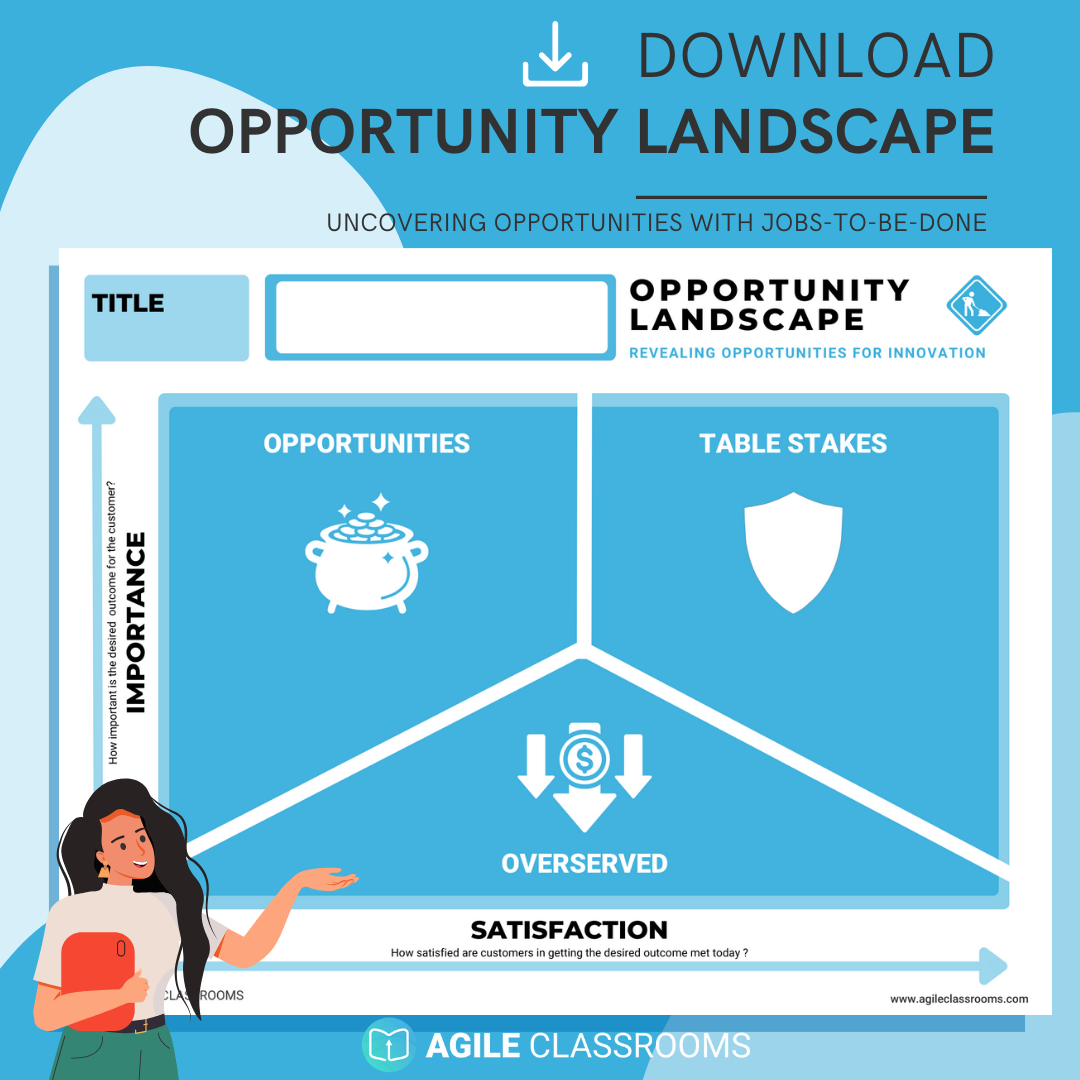Don't Miss an Article
Join thousands of other innovators receiving our newsletter.
Stop Guessing, Start Winning
- John Miller
From Customer Needs to Market Opportunities: Unveiling the Potential with Opportunity Landscapes
Congratulations on your deep dive into Customer Discovery. You've embarked on a journey to uncover the Job To Be Done of your customer (for a refresher, peek at The Customer Job Description) and have gathered their needs as Desired Outcome statements by Leveraging the Customer Job Map). You might find yourself staring at a mountain of needs, typically ranging from 75 to 150 outcome statements, if my journey alongside product leaders has taught me anything. That's a vast expanse of needs—too vast to tackle all at once. So, how do we sift through this abundance to pinpoint the needs that promise the most significant market opportunity?
Introducing the Opportunity Landscape: Mapping Needs for Strategic Decisions
Enter the Opportunity Landscape template—a practical tool that helps us decide which customer needs to address. This clarity directly shapes our product strategy, guiding us towards the outcomes that will make the biggest difference. But how, you might ask?
Importance & Satisfaction: The Compass for Prioritizing Innovation
The Opportunity Landscape template poses two critical questions for each customer outcome statement:
How vital is this outcome to the customer?
-
How satisfied are they with their current solutions?
Where to Focus, Where to Maintain, Where to Leave Behind: Making Strategic Choices with the Landscape
The answers to these questions plot each outcome on the Opportunity Landscape, which is divided into three categories based on the intersection of importance and satisfaction:
Opportunities (High Importance/Low Satisfaction): Here lie the golden nuggets—outcomes of high importance yet low satisfaction. These are the needs poorly met by current solutions, making them ripe for innovation. They're the areas where your product can truly differentiate and shine, offering an irresistible value proposition to your customers.
Table Stakes (High Importance/High Satisfaction): These outcomes are essential yet adequately addressed by current market offerings. They're the must-haves for staying in the game, not necessarily winning it. While they won't attract new customers on their own, neglecting them could drive your customers into the arms of competitors and prevent them from using your product.
Overserved (Low Importance): Within this domain, we discover a nuanced strategy—recognizing when exceeding customer needs might not be the best path. This category exposes outcomes considered of low importance by customers, suggesting that the market may be overdelivering. Here, we're presented with a dual strategy. On one hand, it's an opportunity to simplify, to cut back on the unnecessary and focus sharply on what's truly valued. This could mean avoiding these outcomes altogether, recognizing that not every battle is worth fighting. On the other hand, there's a compelling case for innovation through subtraction—offering a less complex, more affordable product. This approach doesn't just trim the fat; it redefines the market by providing solutions that are just right, not over-engineered.

By navigating the Opportunity Landscape with these insights, you're not just making decisions; you're crafting a strategy that aligns with what your customers truly value and what your company wants to innovate for. This isn't about meeting every need under the sun—it's about focusing on the ones that will make a real difference.
Case Study: Revolutionizing Online Grocery Shopping with Opportunity Landscapes
Let's break this down with a practical example. Imagine our goal is to revolutionize how people Get Groceries Online. We start by mapping out every step of the customer's journey using the Customer Job Map, pinpointing all the desired outcomes when they ‘Get Groceries Online’.
Next, we dive into understanding how crucial each outcome is to our customers and how satisfied they are with the solutions available. Consider the following outcomes we've identified and evaluated:

Sorting these outcomes on the Opportunity Landscape offers us a bird's-eye view of where to channel our innovation efforts, as seen in this example:

Beyond Features: Building Products that Matter with Customer-Centric Prioritization
The Opportunity Landscape is like a map showing us where customer needs are—some are thirsty deserts (Opportunities), others well-watered plains (Table Stakes), and some even flooded areas (Overserved).
We've got several paths we could take on this map, but we won't dive into all of them right now. Our chosen path? Differentiation. It's about finding those deserts and bringing the water they're desperately missing. That means we zoom in on the Opportunities, aiming to fill those gaps with something unique. Sure, we'll sprinkle in a bit of the plains—those Table Stakes—to make sure we're covering the basics. But those flooded areas? We'll steer clear for now.
Other strategies might play in the flooded zones, turning excess into an advantage, but that's a story for another day. For now, our eyes are on those deserts, bringing life where it's needed most.
Armed with the insights from the Opportunity Landscape, you're no longer navigating in the dark. You have a clear roadmap to prioritize the high-impact opportunities that truly resonate with your customers. This laser focus maximizes your innovation potential, ensuring you're not just creating features but crafting solutions that solve real problems and drive meaningful results. Instead of scattering your efforts, this tool puts customer needs at the center, directing your energy toward building products that genuinely matter and propelling you toward sustainable success.
Download the Opportunity Landscape Tool: Shape Your Future, Focused on What Matters
Eager to craft a product strategy that stands out? Download the Opportunity Landscape tool at https://learn.agileclassrooms.com/opportunity-landscape and start shaping the future by focusing on what's truly important to customers. Let's turn those identified opportunities into tangible innovations, crafting solutions that don't just exist but make a significant impact.

Standing on the Shoulders of Giants: Inspiration and Resources for Deeper Exploration
This concept of Opportunity Landscapes was inspired by the work of Anthony Ulwick, particularly his Outcome-Driven Innovation (ODI) framework. To dive deeper into ODI, visit his website: https://jobs-to-be-done.com/outcome-driven-innovation-odi-is-jobs-to-be-done-theory-in-practice-2944c6ebc40e
Having trained over 1,000 individuals on Customer Discovery using Jobs-To-Be-Done (JTBD), I've observed that many prefer a simpler explanation to grasp the core concepts. This article aims to provide that accessible introduction.
However, for those seeking a deeper understanding and advanced techniques like statistical analysis for market segmentation, I highly recommend Ulwick's book, What Customers Want. This book delves into JTBD and ODI with rich detail and practical applications.
Enjoyed this post? Let’s keep going.
Whether you're leading a team, managing a product, or transforming a classroom, I have resources to help you work smarter and get real results.
Click below for what works for you:
Free Resources
More Articles
Engaging Workshops
About John
Hey, I’m John. I help leaders, educators, and product innovators work smarter and build things that matter.
I cut through the noise to bring modern methods that actually work. Whether it’s leadership, product management, or education, the goal is the same—less friction, more impact. No fluff. No jargon. Just real-world insights to help you get better, faster.
💡 What You’ll Get Here:
✔ Smarter ways to lead and collaborate without the micromanaging
✔ Fresh, no-nonsense takes on modern work and education
✔ Tools and tactics to make work easier, faster, and more effective
Work doesn’t have to be chaotic.
Let's connect!